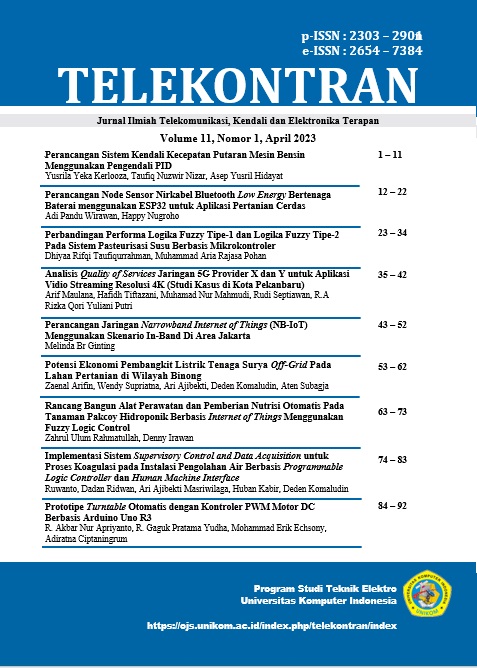Performance Comparison of Type-1 Fuzzy Logic And Type-2 Fuzzy Logic in Microcontroller-Based Milk Pasteurization System
Main Article Content
Abstract
Milk is a perishable food product, to extend its shelf life, a heating technique called pasteurization can be applied. The purpose of pasteurization is to kill pathogenic bacteria that can be harmful to human health and minimize the growth of other spoilage microorganisms. This study aims to design a milk pasteurization system that can regulate temperature stably in the HTST pasteurization method using type-1 fuzzy logic and type-2 fuzzy logic. Type-2 fuzzy logic is a further development of type-1 fuzzy logic, with an additional dimension of membership function, allowing type-2 fuzzy logic systems to represent more flexible fuzzy sets and better represent uncertainty than type-1 fuzzy logic. Two tests were conducted to compare the performance of the two systems, one with no disturbance (noise) and other with disturbance. The result showed that in the test with no disturbance, type-2 fuzzy logic performed better than type-1 fuzzy logic in terms of maximum overshoot, while type-1 fuzzy logic performed better in terms of rise time. However, in the test with disturbance, type-2 fuzzy logic outperformed type-1 fuzzy logic at achieving rise time and settling time and was able to maintain or approach the temperature setpoint for a longer period than type-1 fuzzy logic.
Downloads
Article Details
Section

This work is licensed under a Creative Commons Attribution-ShareAlike 4.0 International license.
